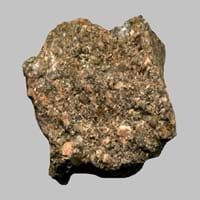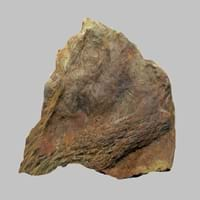Arkose and Siltstone
Definition
Definition
Arkose is a sedimentary rock, specifically a type of sandstone containing at least 25% feldspar
Siltstone can be defined as a fine-grained sedimentary rock which mainly consists of consolidated silt
History
Origin
France
Unknown
Discoverer
Alexandre Brongniart
Unknown
Etymology
From Auvergne region of France used by a French geologist Alexandre Brongniart in 1826 who applied this term to some feldspathic sandstones
From English word silt and stone and from Proto-Indo-European root sal and stainaz
Class
Sedimentary Rocks
Sedimentary Rocks
Sub-Class
Durable Rock, Hard Rock
Durable Rock, Hard Rock
Family
Group
Not Applicable
Not Applicable
Other Categories
Coarse Grained Rock, Opaque Rock
Fine Grained Rock, Opaque Rock
Texture
Texture
Clastic
Clastic
Color
Reddish Brown
Brown, Red, Reddish Brown
Maintenance
Less
Less
Durability
Durable
Durable
Water Resistant
Yes
Yes
Scratch Resistant
Yes
Yes
Stain Resistant
Yes
No
Wind Resistant
No
Yes
Acid Resistant
Yes
Yes
Appearance
Rough and Dull
Rough
Uses
Architecture
Interior Uses
Decorative Aggregates, Homes, Interior Decoration
Decorative Aggregates, Interior Decoration
Exterior Uses
Paving Stone, Office Buildings
As Building Stone, As Facing Stone, Garden Decoration
Other Architectural Uses
Whetstones
Curbing
Industry
Construction Industry
Cement Manufacture, Construction Aggregate, for Road Aggregate, Production of Glass and Ceramics, Raw material for the manufacture of mortar
Building houses or walls, Cement Manufacture, Construction Aggregate, for Road Aggregate, Making natural cement, Raw material for the manufacture of mortar
Medical Industry
Not Yet Used
Not Yet Used
Antiquity Uses
Artifacts, Sculpture, Small Figurines
Artifacts, Sculpture, Small Figurines
Other Uses
Commercial Uses
In aquifers, Soil Conditioner, Source of Magnesia (MgO), Tombstones
Raw material for the manufacture of mortar, Soil Conditioner
Types
Types
Not Available
Not Available
Features
Available in Lots of Colors and Patterns, Generally rough to touch, Is one of the oldest rock
Available in Lots of Colors and Patterns, Easily splits into thin plates, Generally rough to touch, High silica content, Very fine grained rock
Archaeological Significance
Monuments
Not Yet Used
Not Yet Used
Famous Monuments
Not Applicable
Not Applicable
Sculpture
Used
Used
Famous Sculptures
Data Not Available
Data Not Available
Pictographs
Not Used
Not Used
Petroglyphs
Not Used
Not Used
Figurines
Used
Used
Fossils
Present
Present
Formation
Formation
Arkose rock forms from the weathering of feldspar-rich igneous or metamorphic rock, most commonly granitic rocks, which are primarily composed of quartz and feldspar.
Siltstone is a type of sedimentary rock which is formed from fine rock particles. As the particles of eroded rock travel along with water, the edges of the rock are worn-out by water into a rounded shape.
Composition
Mineral Content
Calcite, Clay, Clay Minerals, Feldspar, Micas, Quartz
Calcite, Clay, Clay Minerals, Feldspar, Micas, Quartz, Sand, Silica, Silt
Compound Content
Aluminium Oxide, CaO, Iron(III) Oxide, Potassium Oxide, MgO, Sodium Oxide, Silicon Dioxide
Aluminium Oxide, CaO, Iron(III) Oxide, Potassium Oxide, MgO, Sodium Oxide, Silicon Dioxide
Transformation
Metamorphism
No
No
Types of Metamorphism
Not Applicable
Not Applicable
Weathering
Yes
Yes
Types of Weathering
Biological Weathering, Chemical Weathering, Mechanical Weathering
Biological Weathering, Chemical Weathering, Mechanical Weathering
Erosion
Yes
Yes
Types of Erosion
Coastal Erosion, Glacier Erosion, Water Erosion, Wind Erosion
Chemical Erosion, Coastal Erosion, Glacier Erosion
Properties
Physical Properties
Hardness
6-7
6-7
Grain Size
Coarse Grained
Fine Grained
Fracture
Conchoidal
Conchoidal
Streak
White
White
Porosity
Highly Porous
Highly Porous
Luster
Dull
Dull
Cleavage
Not Available
Not Available
Toughness
Not Available
2.6
Specific Gravity
0
2.54-2.73
Transparency
Opaque
Opaque
Density
Not Available
2.6-2.7 g/cm3
Thermal Properties
Resistance
Heat Resistant, Impact Resistant, Pressure Resistant
Heat Resistant, Impact Resistant, Pressure Resistant, Water Resistant
Reserves
Deposits in Eastern Continents
Asia
China, India, Kazakhstan, Mongolia, Russia, Uzbekistan
China, India, Kazakhstan, Mongolia, Russia, Uzbekistan
Africa
Namibia, Nigeria, South Africa
Namibia, Nigeria, South Africa
Europe
Austria, Denmark, Germany, Great Britain, Netherlands, Norway, Poland, Sweden, Switzerland, United Kingdom
Austria, Denmark, Germany, Great Britain, Netherlands, Norway, Poland, Sweden, Switzerland, United Kingdom
Others
Greenland
Greenland
Deposits in Western Continents
North America
Canada, USA
Canada, USA
South America
Brazil
Brazil
Deposits in Oceania Continent
Australia
New South Wales, New Zealand
New South Wales, New Zealand
All about Arkose and Siltstone Properties
Know all about Arkose and Siltstone properties here. All properties of rocks are important as they define the type of rock and its application. Arkose and Siltstone belong to Sedimentary Rocks.Texture of Arkose is Clastic whereas that of Siltstone is Clastic. Arkose appears Rough and Dull and Siltstone appears Rough. The luster of Arkose and Siltstone is dull. Arkose is available in reddish brown colors whereas Siltstone is available in brown, red, reddish brown colors. The commercial uses of Arkose are in aquifers, soil conditioner, source of magnesia (mgo), tombstones and that of Siltstone are raw material for the manufacture of mortar, soil conditioner.
|
||
|
||
|










